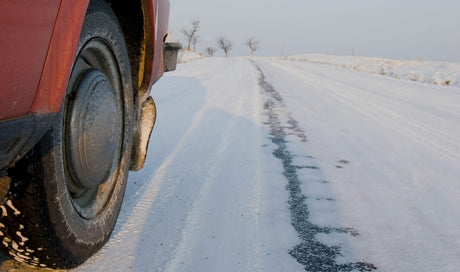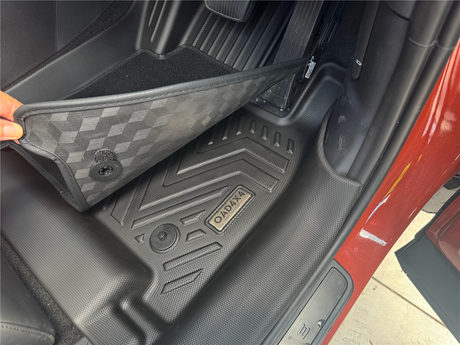Australia is a dream destination for road trips, offering vast landscapes, diverse scenery, and unique experiences throughout the year. Depending on the season, different routes will provide the best travel experiences. Here’s a seasonal guide to road trip routes in 2025, along with essential preparation tips to ensure a smooth journey.
Seasonal Road Trip Recommendations

1. Summer (December - February) – East Coast or Tasmania
- Best for: Beach lovers, water sports enthusiasts, and those looking to escape the heat.
-
Highlights:
East Coast: Surfing, diving, and exploring the Great Barrier Reef (extend your trip to Cairns for the ultimate reef experience).
Tasmania: Enjoy cooler summer temperatures, scenic hikes, and indulge in fresh seafood.
2. Autumn (March - May) – Melbourne; Great Ocean Road / Western Australia
-
Best for: Travelers who enjoy mild weather, wine regions, and stunning natural landscapes.
-
Highlights:
Autumn foliage creates picturesque landscapes, making it perfect for photography and outdoor adventures.
Western Australia offers fewer crowds and breathtaking scenery, ideal for an in-depth exploration.
3. Winter (June - August) – Northern Territory or Inland Queensland
- Best for: Adventure seekers, Indigenous culture enthusiasts, and those looking for warm weather.
-
Highlights:
The dry season in the Northern Territory is perfect for hiking and stargazing.
Witness the mesmerizing sunrise and sunset at Uluru.
4. Spring (September - November) – South Australia or Western Australia Wildflower Season
- Best for: Nature lovers, wildlife enthusiasts, and travelers who prefer mild weather.
-
Highlights:
Western Australia bursts into color with its famous wildflower season.
South Australia’s climate is comfortable, making it a great time for outdoor exploration.
Pre-Trip Checklist

1. Vehicle Essentials
- Car Inspection: Check tires (including spare), brakes, engine oil, coolant, and battery condition. It's a good idea to take your car to a dealership or car service centre for a routine maintenance and check-up before you leave.
- Insurance & Roadside Assistance: Ensure coverage through providers like NRMA or RACV.
- Navigation Tools: Offline maps (Many remote areas have no signal), GPS, or a sturdy phone mount for easy navigation.
- Emergency Kit: First-aid supplies, flashlight, warning triangle, jumper cables, and a tire repair kit.
2. Vehicle Protection
- Floor Mats & Cargo Liners: Investing in durable, all-weather floor mats and a protective cargo liner helps keep your car clean and protected from liquid spills and debris during long road trips. OAD4X4’s 5D high coverage floor mats and 3D boot liners will get you covered, they will keep your interior as clean as new.
- Seat Covers & Dash Mat: Protect your seats from wear and tear, especially if traveling with kids or pets. Meanwhile, a dash mat also minimizes windshield reflection, improving visibility and safety while driving.
- Car Sun Shades: Essential for reducing heat buildup inside your vehicle, particularly in Australia’s hot climate.
- Paint Protection Film: If you plan on off-road driving, applying a protective film can help prevent scratches and chips.
3. Accommodation & Route Planning
- Advance Bookings: Reserve campsites or hotels early, especially during peak seasons like Christmas and school holidays.
- Camping Gear (if applicable): Tent, sleeping bags, cooking equipment, insect repellent.
- Road Conditions: Some remote areas, such as certain Northern Territory roads, require a 4WD. You will need to change to a suitable vehicle or avoid these routes in advance. Check conditions at www.roadreport.nt.gov.au.
- Fuel Planning: In remote areas, fuel stations can be far apart—plan refueling stops accordingly and carry extra fuel if necessary.
4. Clothing & Protection
- Layered Clothing: Prepare for temperature variations, particularly in desert areas where nights can be significantly cooler.
- Sun Protection: SPF50+ sunscreen, a wide-brimmed hat, and sunglasses.
- Insect Repellent: Essential for tropical regions like the Northern Territory, where mosquitoes and other insects can be a nuisance. A set of custom made car sunshades can also keep them out of the car.
- Comfortable Footwear: Whether hiking in Tasmania or walking through the Outback, having durable, comfortable shoes is essential.
5. Other Essentials
- Documents: Driver’s license, vehicle registration, and insurance details.
- Cash & Cards: Some small towns may only accept cash, so always have some on hand.
- Food & Water: Pack enough water and non-perishable snacks for long drives, especially in remote areas.
- Camping Permits: If planning to camp in national parks, check if you need permits in advance.
- Environmental Responsibility: Follow national park guidelines, dispose of waste properly, and leave no trace to help preserve Australia’s natural beauty.
Recommended Resources
- Road Condition Updates: Check official state traffic websites like Live Traffic NSW for up-to-date road conditions and alerts.
- National Park Passes: Consider purchasing an annual pass for access to multiple parks (e.g., NSW Parks Pass) to save on entry fees.
- Weather Forecasts: Always check weather updates before heading to remote areas, as conditions can change rapidly.
- Travel Inspiration: Visit the official Australian tourism website: www.australia.com for more road trip ideas and destination highlights.

With these tips, you’re well on your way to an unforgettable Australian road trip. Whether you’re chasing the sun, exploring the outback, or marveling at coastal wonders, a well-planned journey will ensure a safe and enjoyable adventure. Happy travels!






